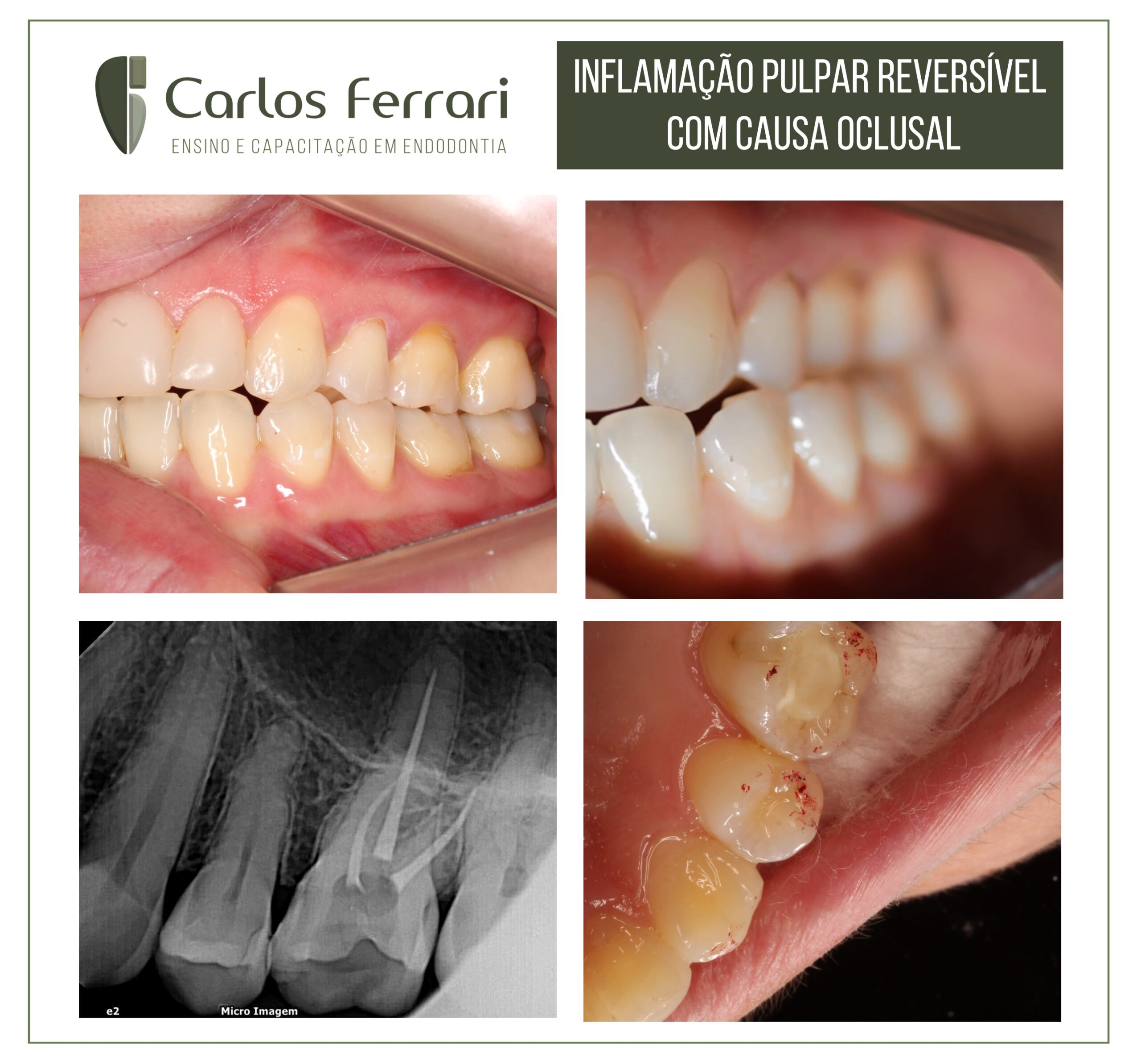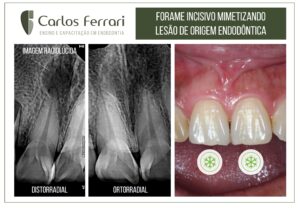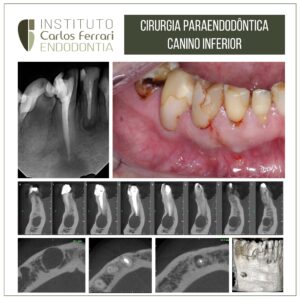Caso de inflamação pulpar reversível de difícil diagnóstico, cuja causa era o contato oclusal em desoclusão por guia pré-molar.
Paciente procurou atendimento queixando-se de dor leve e provocada com frio, de declínio rápido, há cerca de um mês. Relatou a consulta com dois profissionais, sem sucesso da detecção da causa. No exame clínico, dor mais exacerbada no teste térmico no dente 25. No exame radiográfico, apenas uma pequena imagem radiolúcida por distal no referido dente, aparentemente tratando-se de uma infiltração ou espaço entre a restauração, de pequena dimensão. Após algumas tentativas de se descobrir a causa, notou-se que a paciente realizava desoclusão lateral pelo pré-molar.
Foi realizado então o alívio oclusal nesse dente e a paciente orientada para a consulta com um profissional para o reestabelecimento de uma guia canina. A paciente relatou a remissão da dor após o procedimento.
Inflamação pulpar reversível In: Machado, Ricardo. Endodontia: Princípios Biológicos e Técnicos. Disponível em: Grupo GEN, Grupo GEN, 2022:
Definição
A palavra “inflamação” tem origem no latim inflammatione, que vem do verbo inflammare e significa “acender ou atear fogo”. Pode ser definida como uma reação a uma lesão aos tecidos, através da microcirculação sanguínea, com extravasamento de elementos vasculares, como fluidos, células e moléculas do espaço intra para o extravascular.
A inflamação representa o processo pelo qual os tecidos vascularizados do corpo reagem a uma agressão. O processo inflamatório ocorre independentemente da natureza ou do tipo de agente agressor, caracterizando-se por sua inespecificidade. Dependendo do seu grau de efetividade e frequência, a inflamação pode ser considerada fisiológica ou patológica. Na clínica diária, o cirurgião-dentista deve ser capaz de determinar o diagnóstico, o tratamento e o prognóstico de cada caso. A resposta imunológica do paciente e a inflamação representam a principal forma de defesa do organismo frente a ação de agentes agressores e a ocorrência de lesões e neoplasias.
É de extrema importância que o profissional tenha conhecimentos suficientes sobre o processo inflamatório, pois este está intimamente associado ao desenvolvimento de sinais e sintomas de várias patologias do sistema estomatognático. Nas doenças pulpares e perirradiculares, a inflamação atua como fator etiológico e relaciona-se com mecanismos de defesa e reparo. Durante um tratamento endodôntico, o profissional pode se deparar com um processo inflamatório no diagnóstico, no decorrer do tratamento e ao longo da proservação. O reparo tecidual representa a fase final da inflamação.
A dor pulpar é consequente de uma resposta inflamatória a alterações vasculares com características distintas, como vasodilatação, aumento da permeabilidade e liberação de mediadores químicos capazes de manter a inflamação e estimular a dor.
Várias doenças desencadeiam reações inflamatórias consequentes da ação de antígenos e/ou da liberação de suas toxinas. Agentes físicos, como traumatismos, radiação ou processos químicos, também podem dar origem a processos inflamatórios. Diagnóstico e tratamento adequados são determinantes em razão das várias causas para a dor orofacial, por vezes difíceis de elucidar. Toda informação é relevante e deve ser devidamente coletada e incluída no histórico clínico do paciente, bem como os resultados obtidos por meio dos diferentes testes e exames necessários para o diagnóstico.
Inflamação pulpar reversível





